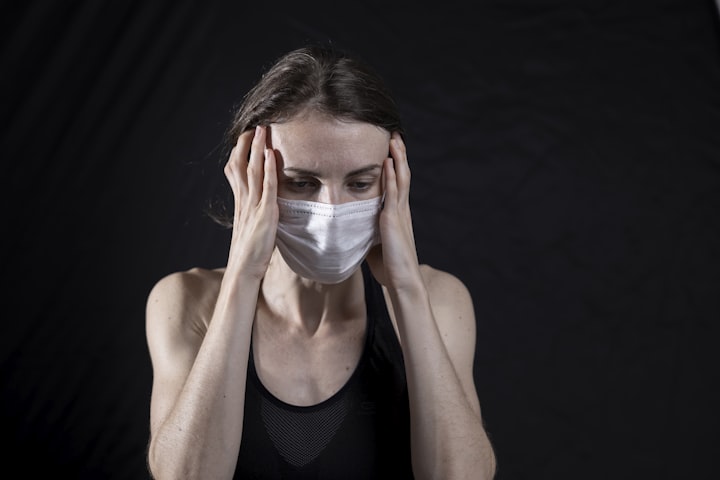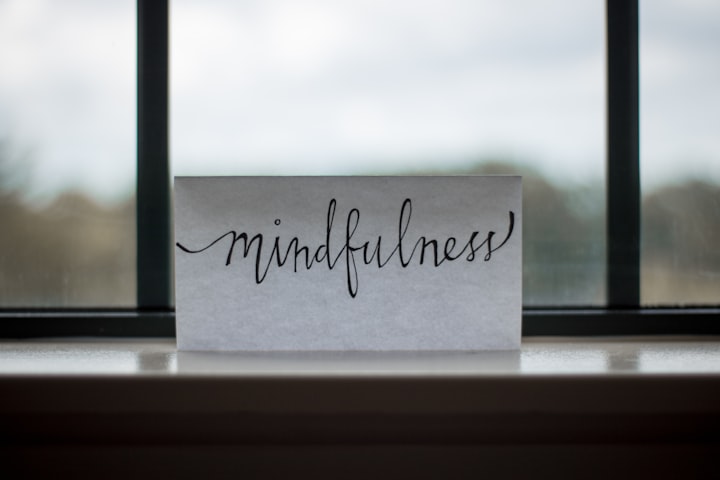Does life really have to be that stressful?
By: Natalie Lewandowski

Let's begin with our mind and body, shall we? Is all that is happening to us really happening? Or are we just molding it to be the more intense situation than it actually appears? Some individuals would say, "I am reacting exactly how I am supposed to act". And others will admit, "I may be overreacting but, aren't my feelings valid?". Now, my personal response to that is, "Yes, your feelings are valid; however, there is room for improvement when it comes to your perspective". What I mean by this is that it is not always necessary to make a mountain out of a molehill. This process starts with us being more self-aware of how our body and mind react to certain situations. For example, some people may realize that when they are surrounded by a crowd of people; also known as claustrophobia, they get extremely anxious. Sometimes they even feel paranoid that someone might harm that individual or others. So, if you are the type of person that knows this about yourself, then some activities such as going to a concert might not be the best idea. Adversely, I would suggest doing what is called exposure therapy to try and counteract these feelings.
In the early 1900s, Ivan Pavlov and John Watson; renowned psychologists, developed exposure therapy. Exposure therapy according to the Society of Clinical Psychology is, "a psychological treatment that was developed to help people confront their fears" (American Psychological Association). This practice is made to help people with their fears and even acceptance with, "Phobias, Panic Disorder, Social Anxiety Disorder, Obsessive-Compulsive Disorder, Posttraumatic Stress Disorder, and Generalized Anxiety Disorder" (American Psychological Association). Forms of exposure therapy include, "In Vivo, Imaginal, Virtual Reality, and Interoceptive" (Sissons, Beth). Now a little about Beth Sissons, she is most commonly known for writing for Medical News Today. This resource is not some unreliable jargon that you might find at multiple different sites on the vast web. Therefore, I would like to clearly articulate that this resource is in fact, reliable, "accurate, trustworthy, and [full of] unbiased health information", according to MNT Editorial Team. Now, to get back to the different types of exposure therapy. Let's begin with In Vivo!
In Vivo: an individual confronts a phobia or a series of situations that may cause fear or anxiety in their life. If that person has a phobia of ants, for example, they may gradually work toward handling a real ant or an army of them eventually.
Another form is...
Imaginal: Usually, a therapist will direct a person to try to imagine a detailed image or scenario of their phobia. People dealing with trauma may benefit from this approach more since it is gentler than trying to attempt the issue at hand on their own. If a person has previous trauma or PTSD, they may recount their experience. Imagining the source of fear or anxiety in a safe setting, alongside talking therapy, can help reduce feelings of distress.
Different exposures work for others. There are more types below.
Virtual Reality: Some fears are not practical for a therapist to replicate in vivo. If a person has a fear of flying, for example, a therapist may stimulate the experience of flying using virtual reality technology. This exposes the person to a realistic and similar experience to help reduce feelings of fear in association with flying, for example.
Last but not least...
Interoceptive: It focuses on creating physical responses that people associate with panic or distress. For example, if a person has panic disorder, they may associate an increase in heart rate with the feeling of panic or danger. For example, the therapist may instruct a person to run on the spot, in a safe setting, to create similar physical sensations without any sense of danger. The therapist may also work with a client to establish a hierarchy of their fears or anxieties. This means placing scenarios in order of which the person finds the most challenging. The therapist may then decide to expose the person to their smallest or biggest fear first. They may refer to these two approaches as graded exposure and flooding. Graded exposure means that people face their least daunting fears first, before gradually building up to more challenging situations with time. This can help people build the confidence they need to overcome a bigger fear. For example, if a person has a fear of snakes, they may first begin by looking at pictures of snakes. This may then progress to having a snake in the room behind glass, and eventually to holding the snake. Flooding means that people begin with exposure to the most challenging fear first. This may then help them face lesser fears more easily. People may require just one or two sessions to resolve an issue, or they may need a longer course of ongoing therapy sessions.
Prolonged exposure therapy provides repeated exposure and involves:
- education about the symptoms and how prolonged exposure therapy can help
- learning breathing techniques to help control feelings of distress
- in vivo exposure to scenarios that may trigger fear and anxiety — for example, a soldier with previous trauma of roadside bombing may begin driving to overcome the fear
- talking therapy, during which people recall traumatic experiences with a therapist to help them make sense of the events and reduce negative thoughts
Prolonged exposure therapy may be helpful for people with PTSD and other responses to trauma. The process is slowed down but repeated so that the treatment can gradually progress over time; in turn, benefitting the individual in the long run. Treatment can vary depending on an individual’s circumstances. For example, some people may meet one-to-one with a therapist for around 60 minutes for a course of several weeks, possibly up to 15 sessions total.
That's the little education about the exposure process and how it pertains to stress management in our daily lives. So the next time you are feeling stressed, ask yourself, should I look into exposure therapy.
Resources:
MNT Editorial Team. "Our Editorial Process." Medical News Today. 15 Sept. 2020. Web. 21 Apr. 2021.
Sissons, Beth. "What Exposure Therapy Is and What to Expect." Medical News Today. Healthline Media, 5 May 2020. Web. 21 May. 2021.
Society of Clinical Psychology. "What Is Exposure Therapy?" Ed. American Psychological Association. July 2017. Web. 17 Oct. 2021.
About the Creator
Natalie Lewandowski
Twin sister, passionate in psychology, ex-Aviation major, & LGBTQAI+ supportive!






Comments
There are no comments for this story
Be the first to respond and start the conversation.